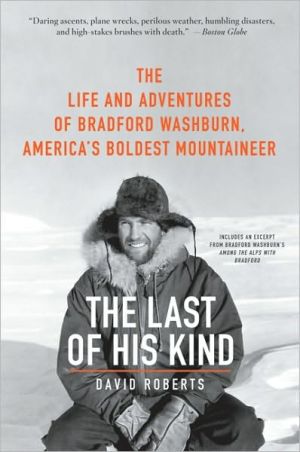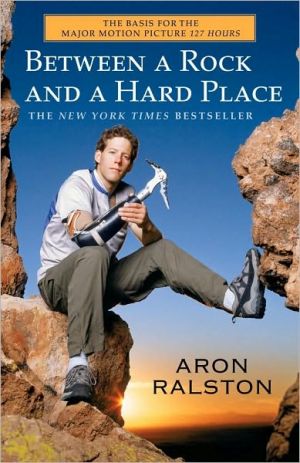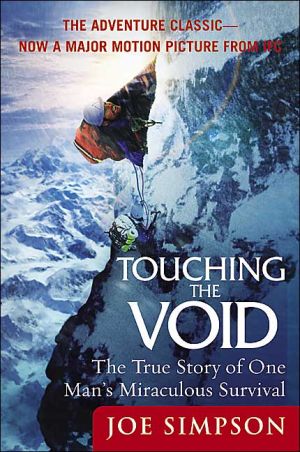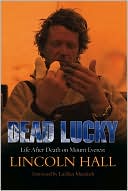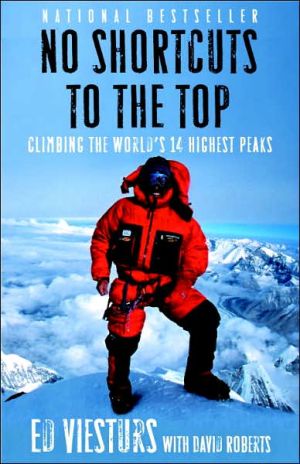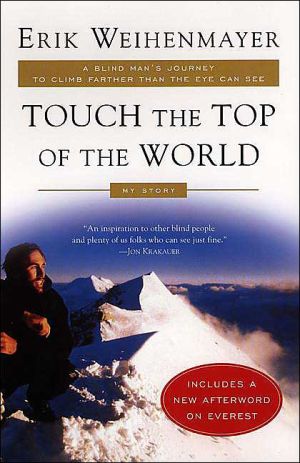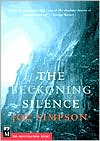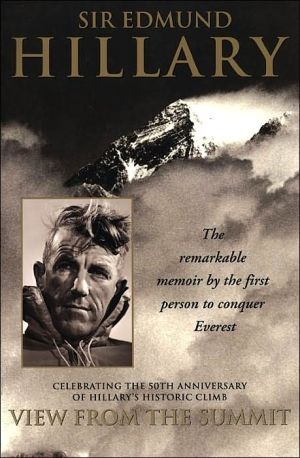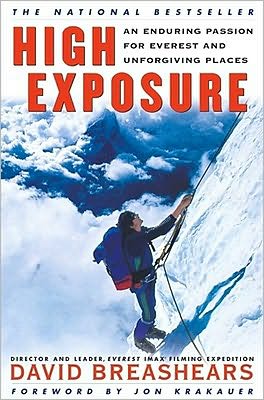The Last of His Kind: The Life and Adventures of Bradford Washburn, America's Boldest Mountaineer
American Brad Washburn's impact on his protégés and imitators was as profound as that of any other adventurer in the twentieth century. Unquestionably regarded as the greatest mountaineer in Alaskan history and as one of the finest mountain photographers of all time, Washburn transformed American attitudes toward wilderness and revolutionized the art of mountaineering and exploration in the great ranges. In The Last of His Kind, National Geographic Adventure contributing editor David Roberts...
Search in google:
American Brad Washburn had an impact on his protégés and imitators as profound as that of any other adventurer in the twentieth century. Unquestionably regarded as the greatest mountaineer in Alaskan history and as one of the finest mountain photographers of all time, Washburn transformed American attitudes toward wilderness and revolutionized the art of mountaineering and exploration in the great ranges. In The Last of His Kind, National Geographic Adventure contributing editor David Roberts goes beyond conventional biography to reveal the essence of this man through the prism of his extraordinary exploits from New England to Chamonix, the Himalaya to the Yukon. Washburn's remarkable achievements including nine first ascents of North American peaks would stamp him not only as one of a kind, but as one of a kind they don't make anymore. Born June 7, 1910, to a Boston Brahmin family whose roots trace back to the Mayflower, this highly intelligent, impatient, and stubborn iconoclast published books, made a monumental first ascent in the French Alps that would become a touchstone in mountaineering history, and lectured on his adventures including an address to the National Geographic Society while still in his teens. In 1935, at the age of twenty-four, while others were turning their attention to the Himalaya, the Harvard-educated Washburn led a three-month journey across what was then the largest remaining unexplored territory in North America the 6,400 square miles of glaciers and mountains in the frozen heart of Alaska's Saint Elias Range. In addition to his prowess as a mountaineer and photographer, Washburn was also a renowned surveyor and cartographer, producing maps of little-known terrain the Grand Canyon, Mt. McKinley, and Mt. Everest that surpassed those that came before, and several of which remain the standard. He was also a scientist who would take a regional natural-history museum and transform it into one of the outstanding teaching institutions of its kind in the world. Roberts introduces the family, teachers, friends, colleagues, and rivals who would play important roles in this legendary man's experiences, and re-creates his enthralling journeys to some of the most remote and beautifully wild places on earth. An exciting narrative of mountain climbing in the twentieth century, The Last of His Kind brings into focus Washburn's deeds in the context of the history of mountaineering, and provides a fascinating look at an amazing culture and the influential icon who shaped it. Publishers Weekly Before his 30th birthday, Bradford Washburn was already a legendary mountaineer, completing four major first ascents on his way to becoming "the greatest mountaineer in Alaskan history." Soon after, Washburn took over the creaky New England Museum of Natural History, which by his retirement in 1980, had become the renowned Boston Museum of Science. Washburn (1910-2007) was also an innovative cartographer as well as a self-taught photographer whose aerial shots garnered major acclaim. A longtime friend of Washburn and a former mountaineer, Roberts (No Shortcuts to the Top) is an ideal candidate for writing Washburn's biography, but the book lacks the depth of compelling biographies. Roberts's decision to extensively profile Washburn's various expeditions (and those of others) offers no insight on the man, while contributing to the book's glacial pace. Roberts obviously has nothing but admiration for Washburn and his accomplishments, but that inhibits opportunities to examine the dark side of Washburn's personal life-his responsibility for a fatal plane crash in 1938; son Ted's inappropriate behavior with high school students that divided the family-which are almost glossed over. (July)Copyright © Reed Business Information, a division of Reed Elsevier Inc. All rights reserved.
The Last of His Kind\ The Life and Adventures of Bradford Washburn, America's Boldest Mountaineer\ Chapter One\ Boy Adventurer\ He was born Henry Bradford Washburn Jr. in Cambridge, Massachusetts, on June 7, 1910. There's no getting around the fact that Brad was a Boston Brahmin: he could trace his ancestry back to William Brewster, of the Mayflower and Plymouth Colony. But he was never rich, even when he was the director of the Museum of Science. An uncle who'd made a fortune in the wire goods industry put Brad through prep school. Entering Harvard in the fall of 1929, just as the Great Depression hit, Brad could barely finance his college education. A lifelong habit of penny-pinching was inculcated during those early years.\ Brad's father, Henry Bradford Washburn Sr., was a minister who eventually became dean of the Episcopal Theological School in Cambridge. His mother, the former Edith Colgate, was the widow of his father's best friend, who had died of typhoid fever in 1902. Brad grew up with a half-sister, Mabel, from his mother's first marriage. Though fifteen years older, Mabel, whom Brad called "Sis," became his close friend and faithful correspondent throughout his teenage years. A year and a half after Brad's arrival, his mother gave birth to another son, Sherwood ("Sherry"), who would go on to become a world-renowned physical anthropologist, one of the first experts to maintain that Piltdown Man was a hoax. (In a brilliant practical joke, several pranksters planted the jawbone of an orangutan and the skull of a modern man in a gravel pit in Sussex, England, in 1912, then claimed to have excavated an early protohuman, the so-calledmissing link. It took more than four decades for the forgery to be exposed.)\ Judging by his writings and his achievements, Brad's character seems to have been fully formed at the age of eight. During the First World War, Brad's father moved the family to New York City, where he selected chaplains for military duty abroad. Already fascinated by the outdoors, Brad spent many a solitary hour fishing from the docks off the Hudson and East rivers. Though its publication was no doubt finagled by his father, Brad's first literary effort to see print was a five-paragraph essay that came out in The Churchman on May 12, 1919. It is called "Fishing: What a Boy Thinks."\ Despite the idiosyncratic spelling that an editor wisely left intact, Brad already comes across as the self-taught expert confidently lecturing others about the proper way to do things:\ Fishing is a very bad habit when out of season. You should not fish to [sic] much because the fish are disterbed and move from place to place; they get scerd and wont bite. I have fished to eat. It is not good to fish for fun and after you have got a great many fish to throw them away or give them to the cat. God never intended them to be throne away, he ecspects them to swim around and chase their tales.Despite his jaunty tone, the lad had a sensitive side: "I have never liked to take the hook out of the fishes mouth, it makes me feel bad and I know the fish don't like it. They make a little grone and are off to the happy hunting ground."\ \ \ But the young angler quickly reverts to practical instruction:\ It is always best to stand at least ten feet from the water. I have always had good luck with a steel rod. The best store to get them is Abarcrombi and Fich, Madison Ave. and 45th St. Most -people think that children living in a city have no chance to fish. That is not true because I have caught a lot of tomy cod off the 79th St. dock, New York.\ \ \ All his life, Brad would prove to be something of a genius at tinkering with gear in the field. At the age of eight, he knew exactly how to manufacture the ideal tackle:If you want to do this, solder a bell onto the end of a strong peace of wire, on the other end a screw. Fasten this on the dock by means of the screw. Have about a hundred feet of line to the wire and with about three hoocks on the end of the line with a sinker. Tie the loose end of the line to the wire and throe the line into the water. When the fish bite the bell will ring. Give the line a quick gerck and pull the fish off and rebait.\ After the war, the family moved back to Cambridge. Many decades later, Brad would credit Miss Florence Leatherbee (it was always "Miss Leatherbee"), his fifth-grade teacher at Buckingham School, with kindling his interest in geography. "She showed us maps of the world," Brad would tell journalist Lew Freedman in 2005. "She had a Hammond Atlas and it showed where gold was found, and copper, and coal. Looking at it, you had the feeling of the world being a live place instead of just a map." At the age of fourteen, Brad drew his own first map, of Squam Lake, the family's summer retreat in New Hampshire.\ Throughout his life, not entirely in jest, Brad would maintain that he became a mountain climber because he suffered from hay fever as a boy. In the summer of 1921, at age eleven, he started hiking up the low hills behind Squam Lake, where he discovered to his amazement that the higher he went, the less his hay fever bothered him. On July 21 of that summer, with his cousin, Brad made his first ascent of Mt. Washington, at 6,288 feet the highest peak in New England. Four years later, with his father and Sherry, Brad repeated the ascent in winter. Mt. Washington has a gentle topography, but especially in winter, thanks to its ferocious weather, it can be a dangerous climb. The crown of the Presidential Range has killed more climbers than any other American mountain. (The highest wind speed ever measured anywhere in the world, 231 miles per hour, was recorded at the summit observatory in 1934.)\ Brad's parents were loving, involved, and indulgent, and Brad and Sherry shared a happy and adventurous childhood straight out of Tom Swift. The small but elite Buckingham School was situated only a few short blocks from the Deanery, the Washburn family house on Mason Street. (By now, Brad's father had become dean of the Episcopal Theological School.) Brad attended Buckingham through fifth grade, then switched to nearby Browne & Nichols for sixth and seventh grades, because beyond fifth grade, Buckingham tutored only girls. (In 1974, the two schools would merge, becoming Buckingham Browne & Nichols, or simply BB&N.)\ In December 1922, three months into seventh grade at B&N, Brad was abruptly offered a "chance-vacancy" at the posh Groton School, in Groton, Massachusetts. He transferred in midterm from B&N, becoming overnight a boarder rather than a day student. Writing from Groton to his parents, Sherry, or Mabel every few days, twelve-year-old Brad was miserably homesick. To his mother on December 14, he put up a brave front: "It is a wonderful school. . . . I am having a fine time." To Sis, at about the same time, he confessed his real feelings:\ "I am sorely afraid that I cannot stay here much longer. I have been on detention every day since I have been here. The work is far too hard for me."\ The Last of His Kind\ The Life and Adventures of Bradford Washburn, America's Boldest Mountaineer. Copyright © by David Roberts. Reprinted by permission of HarperCollins Publishers, Inc. All rights reserved. Available now wherever books are sold.
Prologue: Donjek 11 Boy Adventurer 82 Alaska Breakthrough 273 Blank on the Map 614 Lucania or Bust 855 Perfecting Alaska 1276 The Two best Decisions 1607 Back to Alaska-and into War 1928 Mastery 2239 Explorer Emeritus 263Epilogue: Mentor and Protégé 295Acknowledgments 327
\ Publishers WeeklyBefore his 30th birthday, Bradford Washburn was already a legendary mountaineer, completing four major first ascents on his way to becoming "the greatest mountaineer in Alaskan history." Soon after, Washburn took over the creaky New England Museum of Natural History, which by his retirement in 1980, had become the renowned Boston Museum of Science. Washburn (1910-2007) was also an innovative cartographer as well as a self-taught photographer whose aerial shots garnered major acclaim. A longtime friend of Washburn and a former mountaineer, Roberts (No Shortcuts to the Top) is an ideal candidate for writing Washburn's biography, but the book lacks the depth of compelling biographies. Roberts's decision to extensively profile Washburn's various expeditions (and those of others) offers no insight on the man, while contributing to the book's glacial pace. Roberts obviously has nothing but admiration for Washburn and his accomplishments, but that inhibits opportunities to examine the dark side of Washburn's personal life-his responsibility for a fatal plane crash in 1938; son Ted's inappropriate behavior with high school students that divided the family-which are almost glossed over. (July)Copyright © Reed Business Information, a division of Reed Elsevier Inc. All rights reserved.\ \ \ \ \ \ Kirkus ReviewsFrom prolific mountaineering writer Roberts (Devil's Gate: Brigham Young and the Great Mormon Handcart Tragedy, 2008, etc.), a well-crafted biography of "the greatest mountaineer in Alaskan history."Because the author knows the world of climbing so well, as both practitioner and chronicler, he brings an insider's perspective to this life of mountaineer and photographer Bradford Washburn (1910-2007). As a longtime friend of his subject, Roberts writes with measured authority about Washburn as a character, especially his overwhelming passion, impatience and stubbornness. In describing Washburn's vast explorations in Alaska and the Yukon, his extraordinary number of first ascents and the sharpening of the "increasingly virtuosic exercises in the fast-and-light style he had invented," Roberts avoids hagiography-no small feat given Washburn's prodigious talents. Not only did he fill in many blank areas on maps of the northern regions of North America, Washburn brought great flair to the art of cartography and aerial photography, as well as museum administration-he transformed "the moribund New England Museum of Natural History into the eventually world-renowned Boston Museum of Science." Though unadorned, Roberts's style effectively captures the suspense and danger of Washburn's adventures. A thorough and admiring portrait. Author appearances in Boston and New York. Agent: Stuart Krichevsky/Stuart Krichevsky Agency\ \
